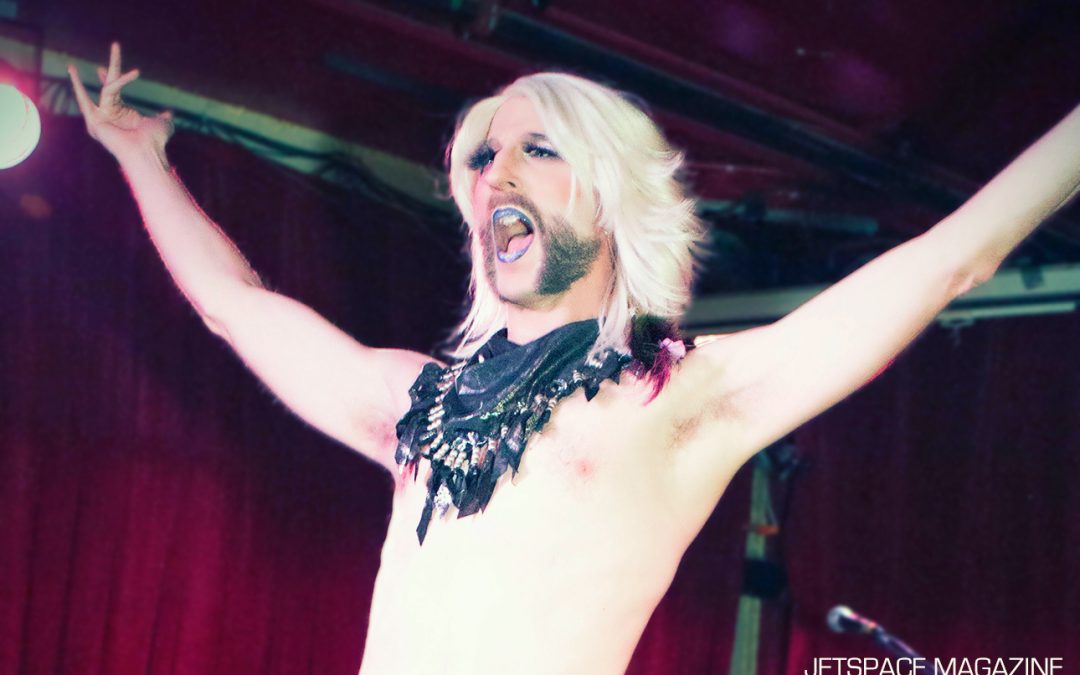For Seattle’s Marc Kenison – known also by his stage name, Waxie Moon – boylesque is still shaping and defining itself as an art form. Kenison, a prolific performer who identifies as a boylesque dancer first and foremost, says the style was born from early 20th century burlesque shows. Later, it experienced a “golden age” in the 1980’s. And now it’s spreading its male-identifying wings yet again.
Kenison will be one of thirty performers from all over the world showing their stuff April 21st and 22nd at the Triple Door for a set of four boylesque performances in the third annual Seattle Boylesque Festival. The art, he says, is performance and stripping done by people who identify as male. “But because it’s a lesser-known form,” says Kenison, “I feel like there’s a lot of creativity that can still happen. I don’t feel boylesque is as beholden to tradition.”
As with any art, there are varying schools of performance. Often these different ideas are based in region. “I feel like in Seattle we have a very gender queer boylesque scene,” says Kenison. “In Chicago, it’s a little bit more male burlesque – many heavy hitters there prefer the term ‘male burlesque.’ In New York, it has a sort of scrappy and in your face, unapologetically sexual component to it.”
To others, Kenison says, the word “boylesque” at the end of the day is simply about marketing. Why not call it “male burlesque” or just “burlesque”? Maybe. But when considering the upcoming set at the Triple Door, if the show was billed as “Burlesque” or “Male Burlesque” instead of “Boylesque” something would likely feel different. But perhaps the most interesting – and frustrating – aspects of the art is its muddled, undocumented history. This mystery allows for a lot of experimentation in the scene but it also makes it hard to honor the pioneers.
“It’s a complicated history,” says Kenison. “Male nudity on stage is not something that’s been recorded or chronicled extensively.” American burlesque, he says, grew its roots when Lydia Thompson and her British Blondes came from England to the U.S. to entertain. More shows blossomed out of these cabaret-style acts: sexy Greek spoofs, muscle shows, women dancing dressed as men. Shows built using comedy, dance, and political satire. Then: nudity.
“Stripping didn’t come until later in the mid- to late-twenties,” says Kenison. “We don’t know what the origins of striptease were. There’s lots of mythology around that. There are lots of points of view. Was it a drunk can can dancer? A costume malfunction? But not surprisingly, stripping became more popular than comedy and music.”
And then the real fun began.
“Strippers began to distinguish themselves with larger-than-life personalities and giant props,” explains Kenison, a Julliard trained dancer. And it’s this flamboyant aesthetic that keeps drawing him back to perform time and time again. “I love the people drawn to this art form. I’ve worked in a lot of capacities in dance and theater. But the nicest people and most self-sufficient artists are in boylesque and burlesque. They create their own costuming, their own acts. It attracts people that have a real desire to do it and people with a naughty sense of humor. That’s the kind of people I want to be around.”
And Seattle, he says, is one of the shining lights of boylesque in the world.
“When I travel to Vienna, Helsinki, people are always like, ‘Oh, you’re from Seattle? That place seems amazing!’ and I’m like, ‘It is.’ And that’s why we’re hosting this festival!”

